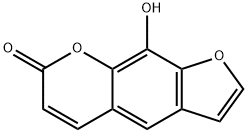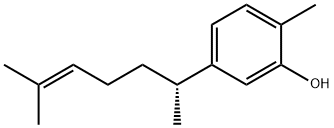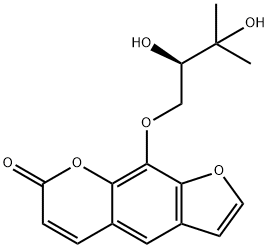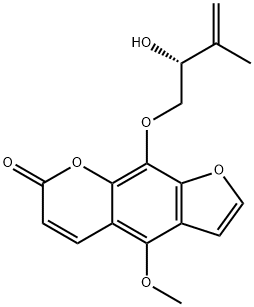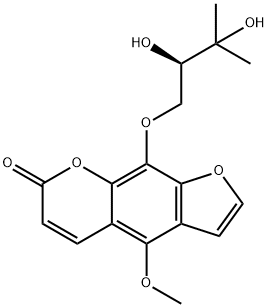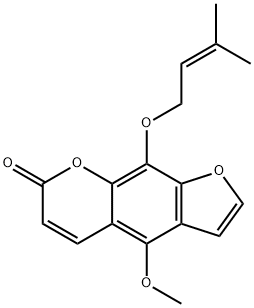PRODUCT Properties
| Melting point: | 250°C |
| Boiling point: | 428.1±45.0 °C(Predicted) |
| Density | 1.526±0.06 g/cm3(Predicted) |
| storage temp. | 2-8°C |
| solubility | DMSO (Slightly), Methanol (Slightly) |
| form | Solid |
| pka | 5.74±0.20(Predicted) |
| color | Light Beige to Dark Brown |
| LogP | 1.405 (est) |
Description and Uses
Xanthotoxol is a coumarin and a major component in C. monnieri that has diverse biological activities. It inhibits proliferation of HeLa and HepG2 cells in vitro (IC50s = 23.59 and 15.57 μM, respectively). Xanthotoxol increases histamine release from mast cells and decreases secretion of TNF-α, IL-4, and IL-1β from RBL-2H3 cells induced by DNP-human serum albumin (DNP-HSA). It is nematocidal against M. incognita (IC50 = 68 mg/L). In vivo, xanthotoxol inhibits predatory mouse and rat killing behavior in dogs and cats when administered at doses ranging from 3 to 100 mg/kg and 5 to 20 mg/kg, respectively. It reduces amphetamine-induced hypermobility in mice and hamsters. Xanthotoxol (5 and 10 mg/kg) reduces brain edema, neutrophil infiltration, blood-brain barrier disruption, production of IL-1β, TNF-α, IL-8, and nitric oxide (NO), and levels of intercellular adhesion molecule-1 (ICAM-1) and E-selectin in a rat model of focal cerebral ischemia.
Xanthotoxol is a hydroxylated psoralen that inhibits neutrophil infiltration and brain edema induced by focal cerebral ischemia-reperfusion injury in rats. A potentially useful antiarrhythmic agent. It has been show n to be effective in the prevention of ventricular fibrillation of mice induced by chloroform, of rats induced by calcium chloride, and in treatment of rat arrhythmia induced by aconitine. Recent stud ies show that it may also have antioxidant and anticancer activities.
Safety
| Symbol(GHS) |  GHS07 |
| Signal word | Warning |
| Hazard statements | H315-H319 |
| Precautionary statements | P264-P280-P302+P352-P337+P313-P305+P351+P338-P362+P364-P332+P313 |
| Risk Statements | 25 |
| Safety Statements | 20-45-24/25 |
| RIDADR | 2810 |
| HS Code | 29329990 |

